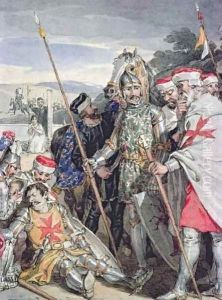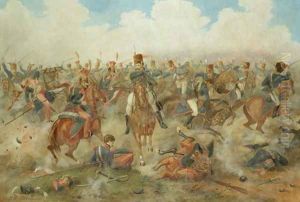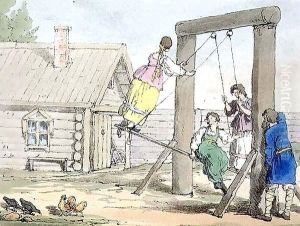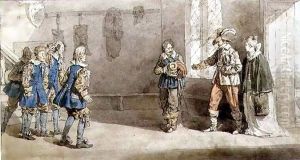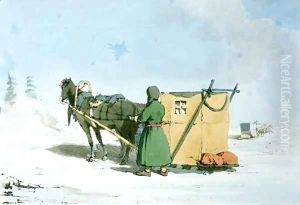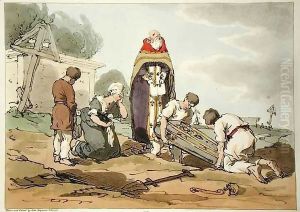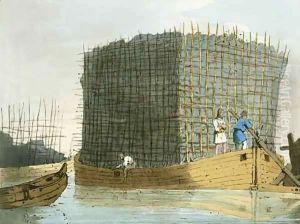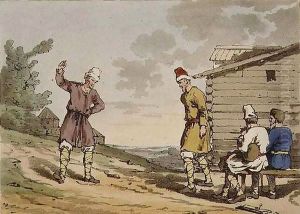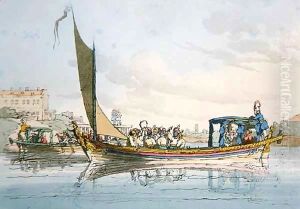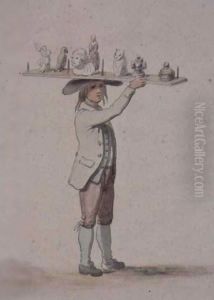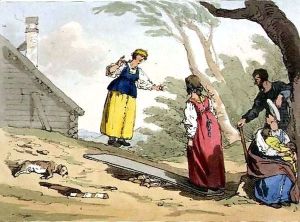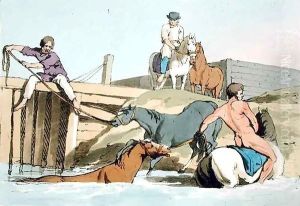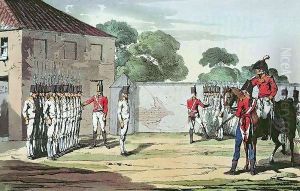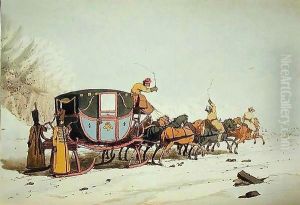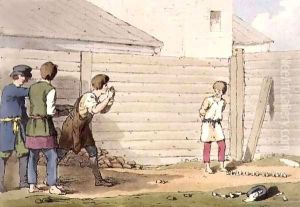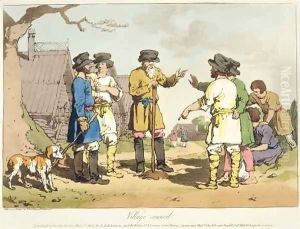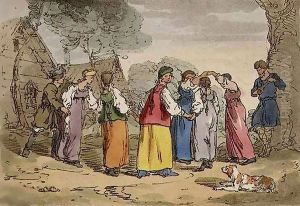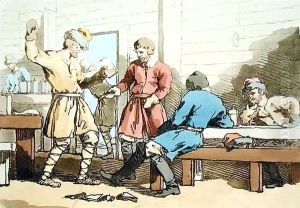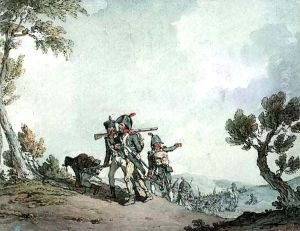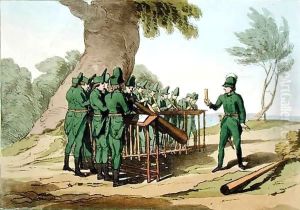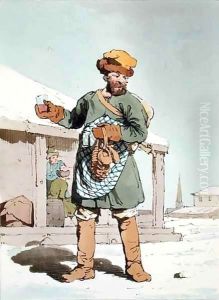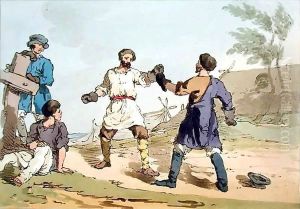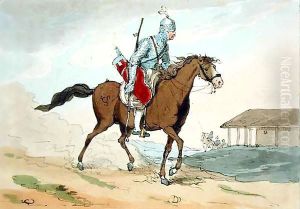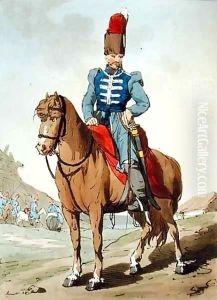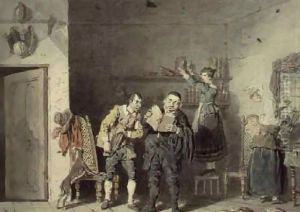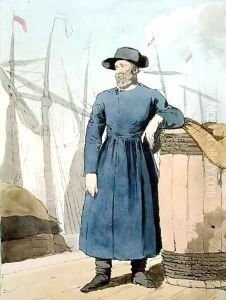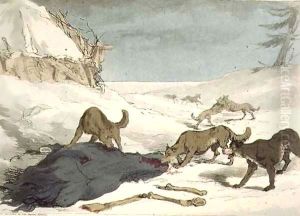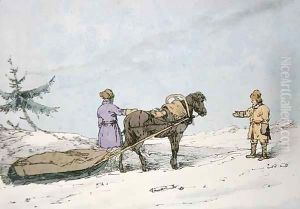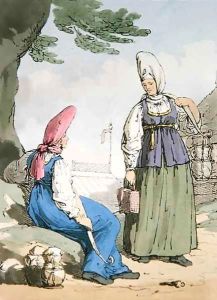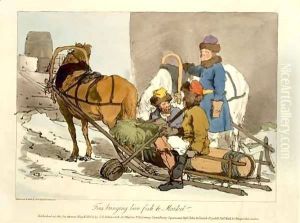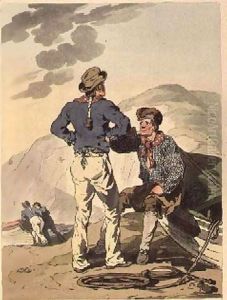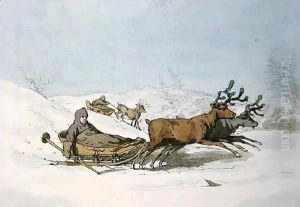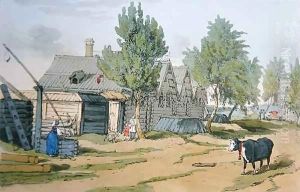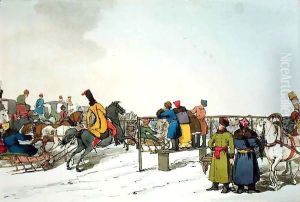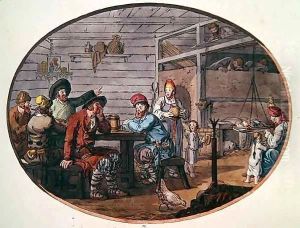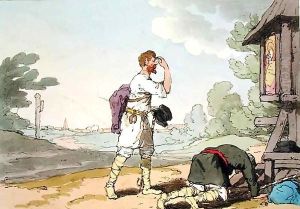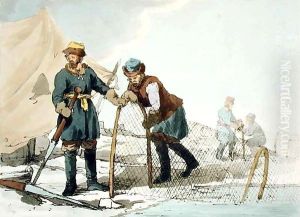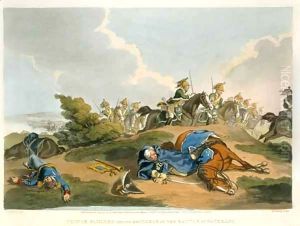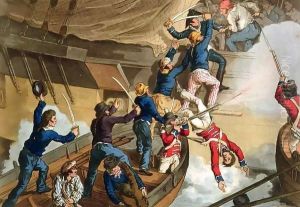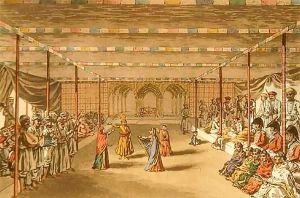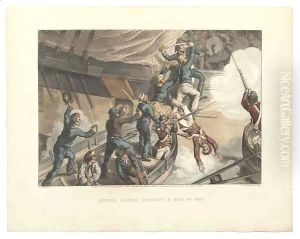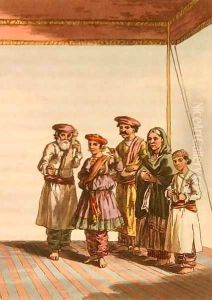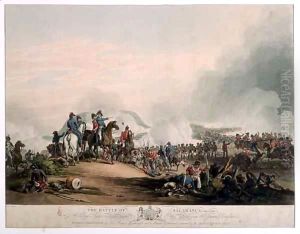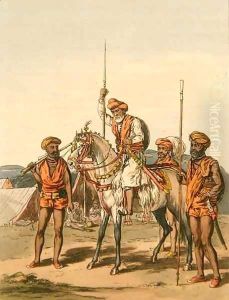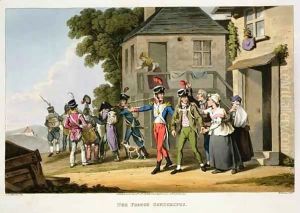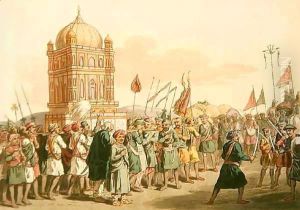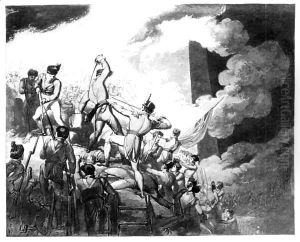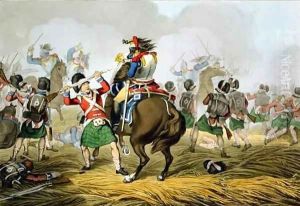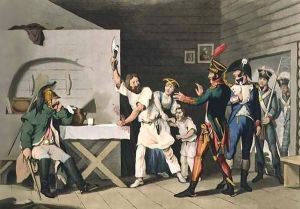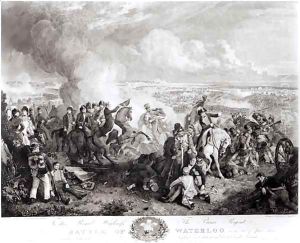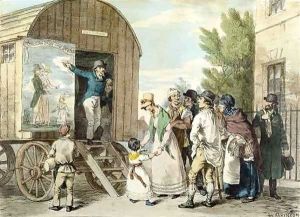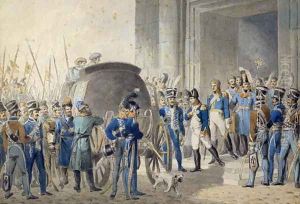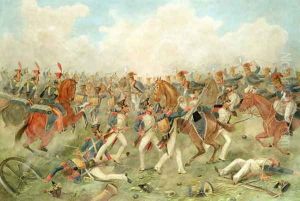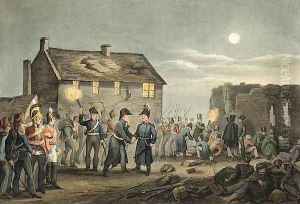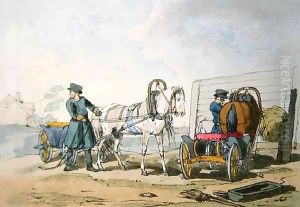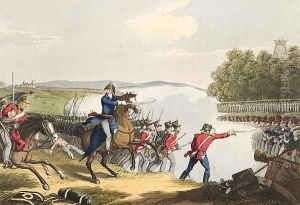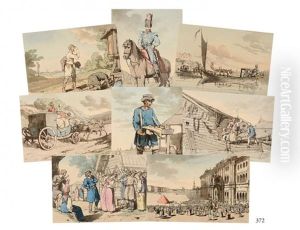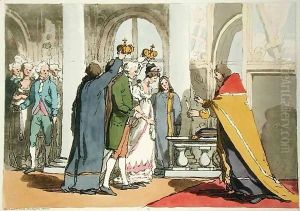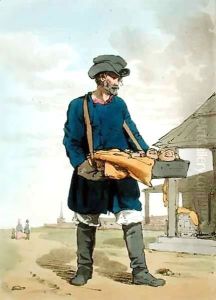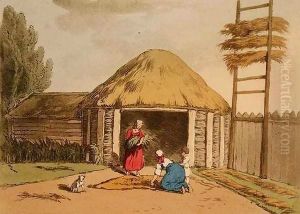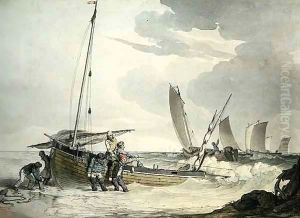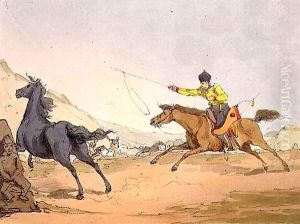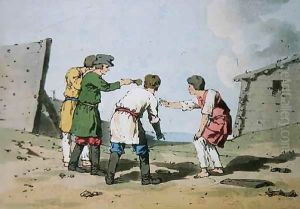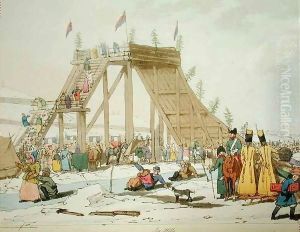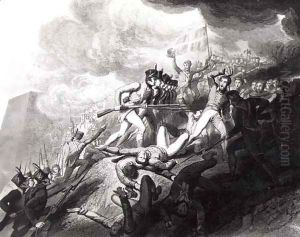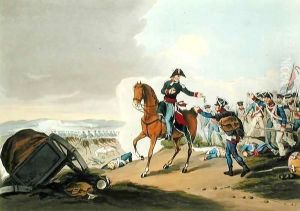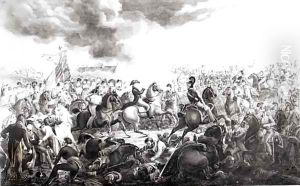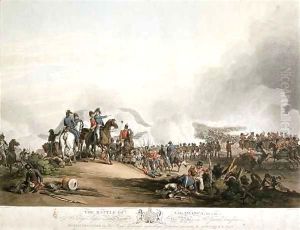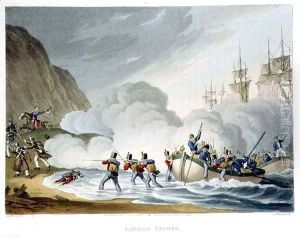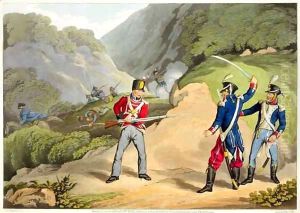John Augustus Atkinson Paintings
John Augustus Atkinson was a British artist, illustrator, and engraver, born in London in 1775. His artistic journey began under the guidance of his uncle, James Walker, a notable engraver of the time. This early exposure to the arts paved the way for Atkinson's diverse career, which spanned across various mediums and subjects, from historical scenes and landscapes to illustrations of everyday life. His talents were not confined to Britain, as his work also took him to Russia, where he spent a significant period of his life.
In the late 18th century, Atkinson traveled to Russia with his uncle, a trip that would profoundly influence his artistic output. During his stay, he captured the essence of Russian society, military campaigns, and rural life through his keen observational skills. This period was marked by significant historical events, including the Napoleonic Wars, which Atkinson documented through his art. His works from this time provide a valuable visual record of Russian life and military campaigns, marked by a detailed and narrative style that appealed to both Russian and British audiences.
Upon his return to Britain, Atkinson continued to develop his craft, producing works that ranged from book illustrations to watercolors and engravings. His illustrations for books such as 'A Picturesque Representation of the Manners, Customs, and Amusements of the Russians' (1803-04) are particularly noteworthy, offering insight into the diverse aspects of Russian culture and society at the time. Atkinson's contributions to the arts were recognized by his contemporaries, and his works were exhibited at prestigious venues such as the Royal Academy.
John Augustus Atkinson's legacy is characterized by his versatility as an artist and his ability to capture the spirit of the times he lived in. His extensive body of work provides a unique window into the early 19th century, spanning two distinct cultures. He passed away in 1833, leaving behind a rich portfolio that continues to be appreciated by art historians and collectors alike. Atkinson's work remains significant for its historical value and its artistic merit, offering a bridge between the worlds of Britain and Russia during a pivotal era in European history.
